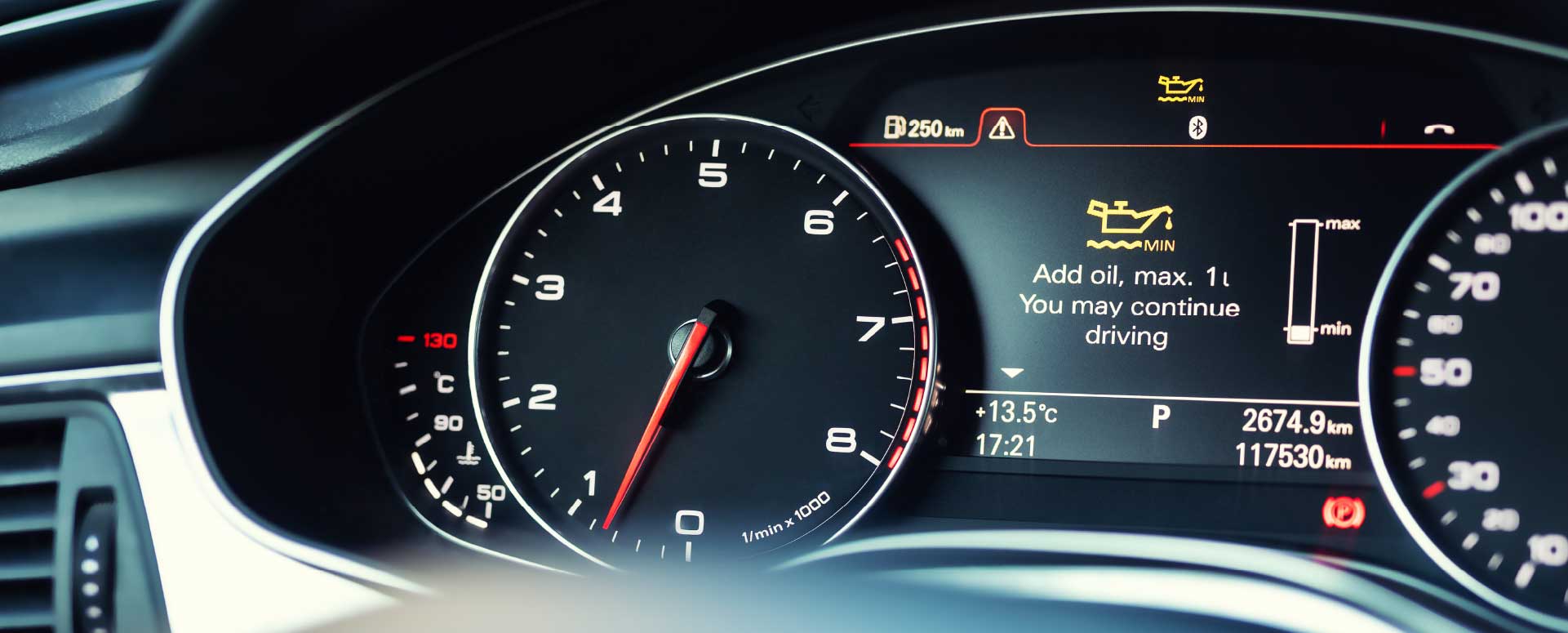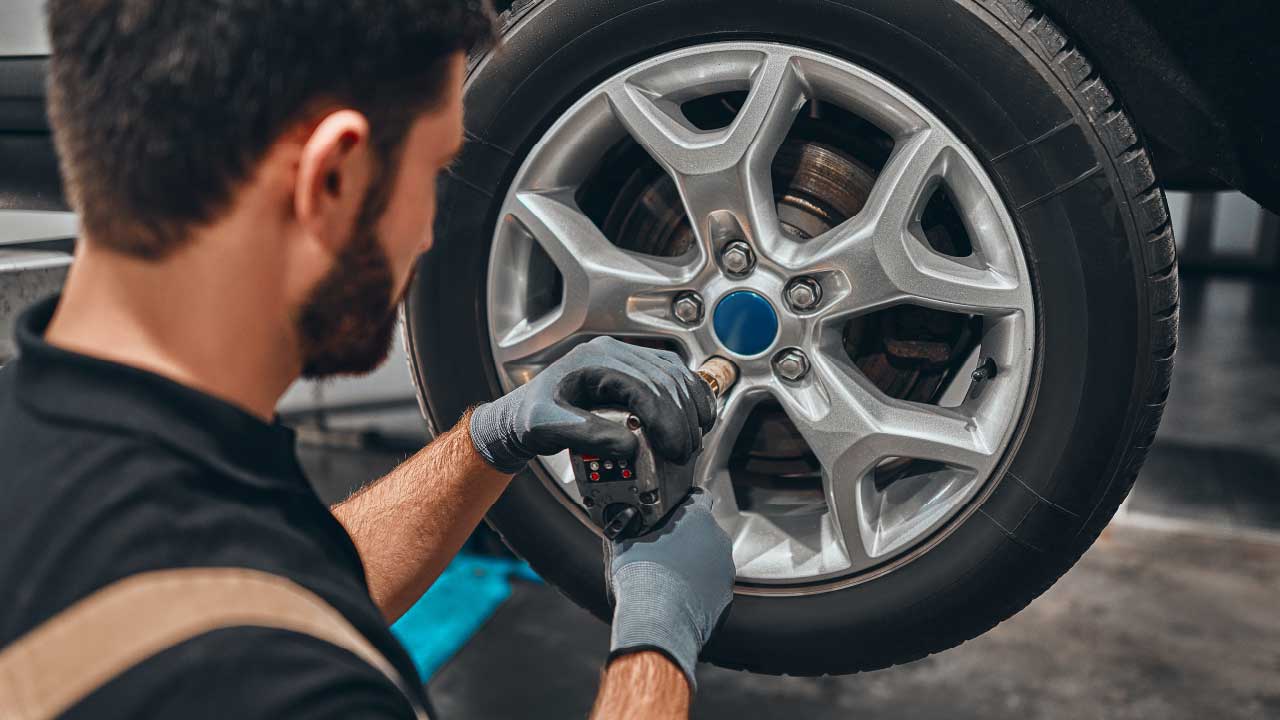The most common dashboard lights
Even if you are driving a company vehicle, you still need to pay attention to what your dashboard is telling you. Dashboard warning lights identify faults within your car, and it can be dangerous to continue driving when these lights are on.
Translating the range of symbols can be confusing, but it is important to know which lights require immediate attention and which ones can be investigated at a later time.
Although some dashboard warning lights are specific to certain car models, others can be recognised generally. So, it is essential to refer to your vehicle's handbook (found in the glove box of your company vehicle) for specific warning lights applicable to your car.
Engine Warning
The engine warning light illuminates each time the ignition is switched on. If it continues to stay on whilst the engine is running, this could mean there is a malfunction with the engine management system. Although it could be a fault with the electrical sensor, there is a possibility the car has entered safe mode to protect itself due to the lack of power.
However, if the engine warning light flashes whilst you are driving, ensure you reduce your speed until the warning light is continually on and continue to drive, avoiding heavy acceleration until it is safe to stop and have it checked.
Oil Pressure Warning
The oil pressure warning light should also come on each time the engine starts. If the engine light remains on, it is possible the oil level is low, so ensure you turn off the engine, check the engine oil level and top up if needed.
Another possibility is that the oil temperature is too high, or the pressure is too low. This could lead to engine damage due to oil lubricating the engine, thus the engine should not be started even if the oil level is correct.
Battery Charge Warning
Another light that should illuminate each time the engine is switched on is the battery charge warning light. If it does not illuminate when the engine is turned on or appears whilst driving, this could mean there is a fault with the charging system and the battery is not being charged.
It could also indicate a fault with the electrical system such as a faulty or loose alternator or alternator drive belt, slack battery, starter terminal, or a poor connection, therefore increasing the chance of running out of electrical power.
Brake System Warning
One of the most important features on your vehicle, the brake system warning, remains on when the handbrake is engaged. However, if it is illuminated after the handbrake is released, this means the brake fluid level could be low. In this case, you could refer to your vehicle handbook and correct the brake fluid to its maximum mark.
If the brake fluid is too low and the pedal travel is longer than usual, there is a possibility that the hydraulic brake circuits could fail. Additionally, the brake system warning light could also mean worn brake pads or a fault with the ABS anti-lock braking system.
Coolant Warning
The coolant in the car keeps your engine functioning correctly, as low coolant could result in the engine overheating. If the sign comes on, top up the coolant that is under the bonnet. If this does not solve the issue, your engine could be overheating due to a leak in the system or a head gasket failure, so the vehicle should be checked.
ABS Warning
The Anti-lock Braking System ensures your wheels turn at exactly the same speed, keeping the tyres in contact with the road when you apply the brakes. It also prevents the wheels from locking up if you have to brake sharply, therefore helping to prevent skidding.
If the ABS light is on, then this system is not working properly, and you could be in trouble if you skid on slippery roads or have to perform an emergency stop. However, the brakes will still work in normal situations, so through defensive driving you can still reach your destination safely. However, if the brake light is on too, you definitely need to pull over.
Tyre Pressure Monitor Warning
A tyre pressure monitor warning can indicate a puncture, as the monitoring system detects if the pressure has decreased by 25 percent or more. If this symbol appears, check your tyres for punctures or check the pressure in your tyres. The symbol is more likely during the colder months, as the cooler temperatures lower the tyre pressures.
Airbag Warning
Also known as the Supplemental Restraint System, an airbag warning light indicates that either the airbag could deploy when unexpected or alternatively not go off at all during a crash. This could result in injury, so ensure you take your vehicle to get checked.
Power Steering Warning
The power steering warning is also known as an EPAS light. This signifies a fault with the steering system, which could result in heavy steering, making manoeuvring increasingly difficult. This could be dangerous, especially at low speeds.
Power steering fluids levels should be checked and topped-up if required. If the level keeps decreasing once topped up, there is the possibility of a leak within the system.
Diesel Particulate Filter Warning
The diesel particulate filter removes harmful smoke from exhaust fumes to reduce emissions. If faulty, the DPF will ignite, resulting in toxic smoke being emitted every time you accelerate, as well as damaging your engine in the process. The DPF needs to be emptied frequently to remain effective.
Vehicle Servicing
To keep your vehicle in top shape throughout its time with you, it is essential to have the car serviced every year or at mileage milestones, whichever the manufacturer recommends.
Please be aware that it is the responsibility of the driver to ensure the vehicle is serviced at the recommended times; a reminder may pop up on your dashboard when it is ready.







